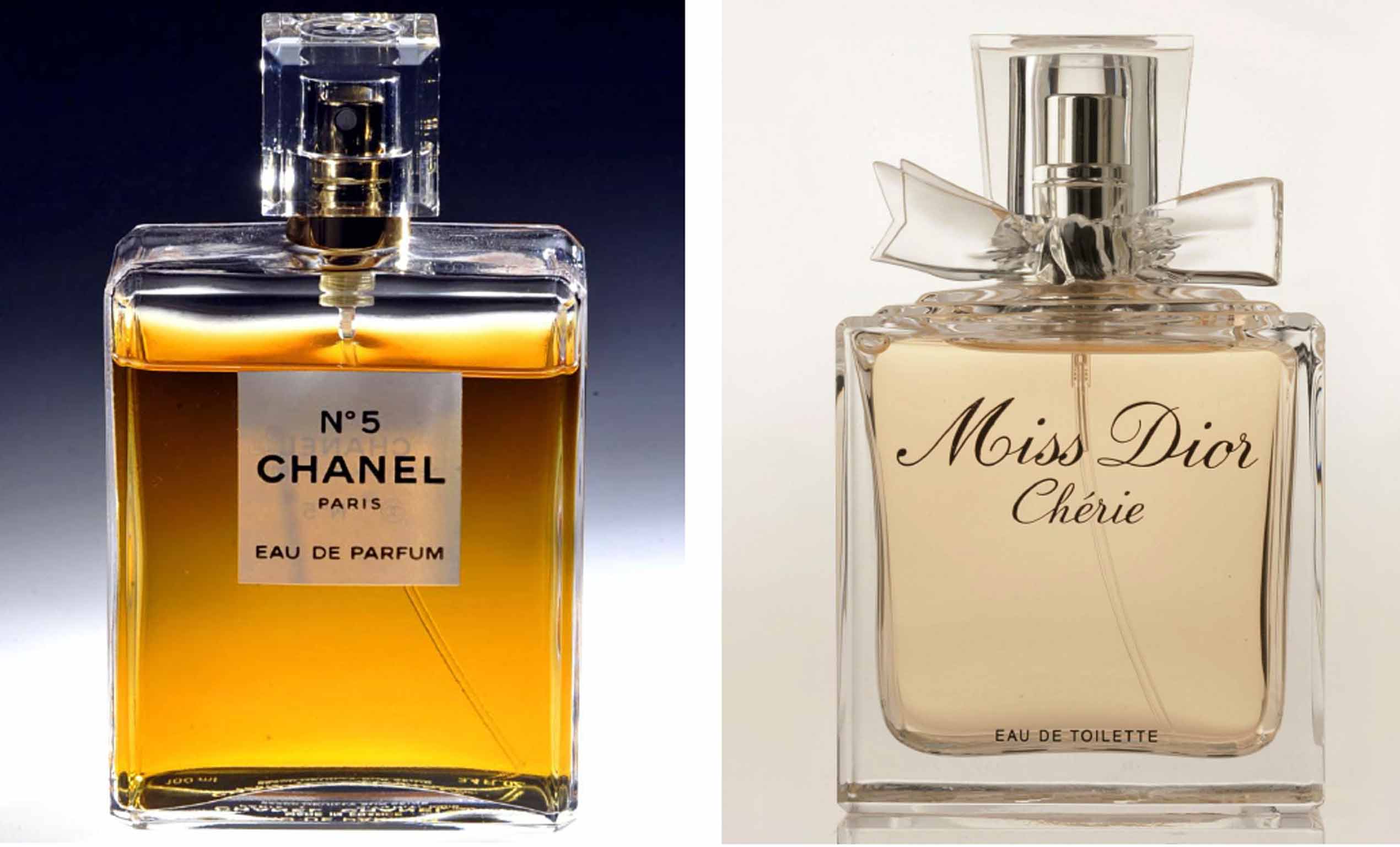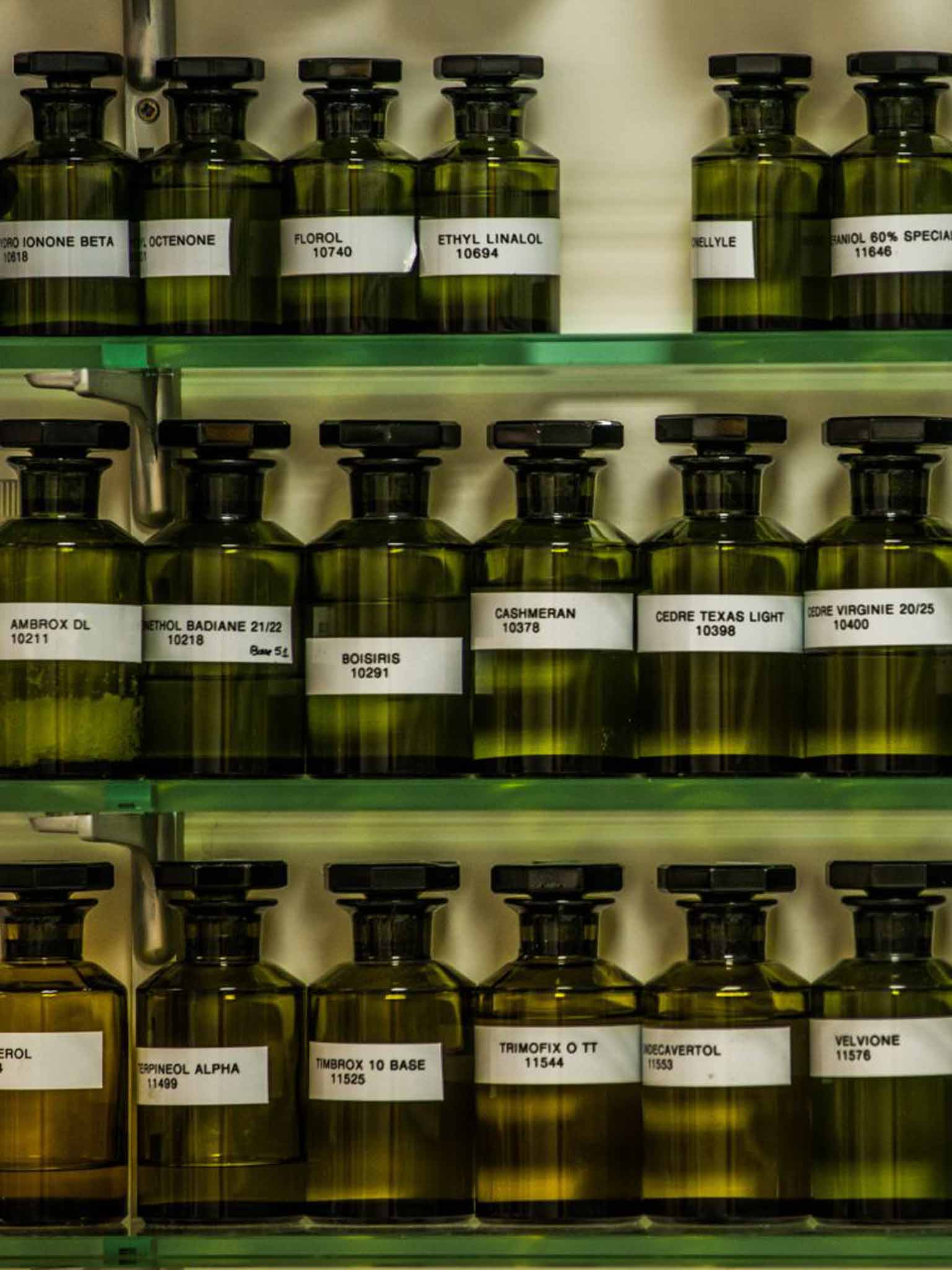Will a ban on oakmoss kill the French perfume industry?
Plans to ban the use of oakmoss, an essential ingredient of elite perfumes, has thrown the world of fragrance into disarray. Anne Penketh reports

Thomas Fontaine goes into his laboratory lined with shelves of dark green bottles and takes a small vial of a sludgy brown substance from the fridge. It gives off a woody, pungent smell. Under a European Commission ruling expected to come into force next year, two elements contained in this oakmoss are to be banned.
The problem for Fontaine, one of France's elite perfume creators known as a "nose", and others in the industry is that this natural raw material gives the country's oldest high-luxury scents their distinctive smells.
"You don't get much more upmarket than this," Fontaine tells me in his office behind the Champs-Elysées. He is the in-house perfumer at Jean Patou, whose classic fragrance, Joy, is renowned as one of the most expensive perfumes in the world. Jasmine from Grasse on the French Riviera, one of its core ingredients, costs €70,000 (£56,000) per kilo.
But Fontaine is also an independent nose who puts himself out to tender to create perfumes for other luxury brands, including Jean-Louis Scherrer, Lubin and Worth. His desk, marked with a note saying "Please do not tidy", is strewn with spiky white blotters that he uses to assess the scents in his latest creations.
He turns his attention back to the vial of oakmoss, explaining that two of its molecules – atranol and chloroatranol – are to be banned on the grounds that they could cause up to 3 per cent of the EU population to suffer an allergic reaction. A third compound, which replicates the scent of lily of the valley, called HICC or lyral, is also to be banned on the recommendation of the European Commission's scientific committee on consumer safety. The committee has pointed to an "exceptionally high" number of allergy cases linked to HICC, which is a synthetic molecule.

Fontaine, a trained chemist, protests that the proposals are unfair. "Because a very small number of people are suspected of having a skin reaction, you are preventing everybody from using it," he says of the oakmoss (and treemoss) amendment concerning atranol and chloroatranol. "Cigarettes can kill you, but they're not banned."
He is also critical of the EU's scientific approach, saying that if you stick your arm into a bucket of oakmoss and leave it there, then of course you'll get a rash, but that this has nothing to do with a natural reaction. He says that Joy, for example, has been tested in vivo on generations of women since its creation in 1930 "and nobody has complained". Gilles Thévenin, the owner of the Lubin perfume house, describes the proposed regulations as technocratic madness. "They don't realise they're killing the French perfume industry," he says.
For Lucia Caudet, the EU spokeswoman for industry, the matter comes down to the scientific committee's finding that atranol and chloroatranol were "unsafe". Therefore, Caudet says, they are in violation of the EU cosmetics directive. She adds that any ban of the allergens would aim to protect not only those consumers who had had an adverse reaction to them – through labelling – but also those who have not experienced any problems, to prevent them from acquiring a contact allergy. She also says that the perfume industry has informed EU authorities that "it is technically possible" to remove the offending molecules from oakmoss extract beyond mere trace levels.
The best known fragrances containing oakmoss include the original versions of Chanel No 5 and Miss Dior, but the prized essence is an integral part of all chypre and fougère scents for women and men. Chypre is the class of fragrances that usually have a top note of citrus and woody base notes derived from oakmoss and ambergris, while fougère fragrances have a top note of lavender and base notes of oakmoss and coumarin. The first perfume with a dominant chypre note was François Coty's Chypre, created in 1917.
In a statement, a spokesman for Chanel says that the new regulation will allow the company to make adjustments to the qualities of the raw materials concerned, while preserving the olfactory identity of its perfumes. "This is not the first time the regulation has been amended and keeping up can be a challenge," the spokesman continues. "But that is exactly what our nose and the Chanel fragrance laboratory is for: to use his talents to comply with the regulatory constraints and at the same time preserve the personality of the perfumes."
The writing has been on the wall for the $27bn global luxury perfume market for some time over skin allergies. Fontaine says that the combination of the European Commission rulings and International Fragrance Association guidelines has meant that perfumers have to reformulate some fragrances every year. How would he find a substitute for the oakmoss elements? Scornful of a suggestion that seaweed might do the trick, he opens the fridge to produce a vial of algae. "Oakmoss does have a slight marine note," he tells me, "but it's nothing like this. We must stop this nonsense. The customer will notice the difference and complain and accuse us of trying to save money. But finding a substitute for oakmoss could cost even more money."
Stéphanie Bakouche, the perfume director of L'Artisan Parfumeur, who is also a nose, says that there really aren't any substitutes for oakmoss. "It's inimitable," Bakouche says. Only one synthesised molecule, a powder called evernyl, comes anywhere close to reproducing the oakmoss smell, she says.
A big part of the perfumer's work is overcoming such obstacles in development, she says, but also modifying existing perfumes so that the customer doesn't notice. But she goes on to say that the industry is being handicapped by regulations. She created the men's fragrance Invasion Barbare for MDCI Parfums and will launch a new perfume for her company next year. She points out that there had been an attempt by the EC committee to ban rose essence on health grounds. "It's one of the essential components of perfume," she says. The committee also tried to ban linalool, a component of lavender, which is also used in scents.
She, too, questions the allergy tests, noting that the perfume industry already lists 26 potentially allergenic ingredients on fragrance boxes. "If you have an allergic reaction, how do you know if it's caused by one of the molecules on the list?" she asks. The EC intends to extend the list to 83 potentially allergenic ingredients, posing an additional labelling headache for the perfumers. Discussions are under way as to whether the labels should be inserted inside the packaging, as with medicines, or even placed online. "If you buy lipstick, for example, where do you think there's room for a list of 83 ingredients?" says Bakouche.
The proposals for the new restrictions are now being reviewed by expert groups in the EU member states before coming into force next year. But the timetable has already slipped and could be further extended because cosmetics have been moved from the responsibility of Health and Consumer affairs to Industry under the newly formed European Commission presided over by Jean-Claude Juncker.

The changes have been under discussion since the scientific committee on consumer safety set out recommendations on fragrance allergens in June 2012, triggering a furious reaction from the top perfumers. The advisory committee said that commercial fragrances and other scented cosmetic products can provoke dermatitis, in patch tests as well as in simulated use conditions. The committee found that among eczema patients in the European population, who can be affected for life by the condition on their face, armpits and hands, "around 16 per cent are sensitised to fragrance ingredients".
But the committee's initial recommendations were more draconian than those now planned, following a public consultation which included the perfume industry. Although not yet finalised, the EC describes the proposals as a sensible compromise that rejects an outright ban on fragrances and instead considers recommendations to severely curtail the concentrations of eight essential perfume ingredients that may contain potential allergens. The labelling is also to be reviewed.
Thévenin, whose perfume house was founded in 1798, blames chemical industry lobbyists in Brussels for the new restrictions. "Little by little, the EU has banned more and more raw materials for health reasons, in the name of the chemical industry," he says. "We've been taken hostage."
According to Thévenin, the "big five" chemical giants dominating the flavours and fragrance business – Symrise, Givaudan, International Flavors & Fragrances, Firmenich and Takasago – promote their synthetic molecules with the intention of forcing independent perfumers to become dependent on them. The chemical companies, he says, don't like independent perfumers using natural materials. "They want a monopoly," he says, pointing out that the high-end French perfume business, the capital of which is in Grasse, makes up only 1 per cent of the flavours and smells industry, which includes shampoos and detergents.
Perfumers say that a fragrance needs to be a balance of synthetic molecules, which provide the building blocks of a scent, and the rich natural essences. They complain that the allergy testing is mainly carried out in northern Europe, and that the European Commission's advisory body includes experts from Scandinavia, where perfume is not popular on health grounds. They fume about diktats from what one called "Nordic dermatologists".
However, Caudet points out that the 12 members of the committee are chosen for their scientific excellence rather than nationality. In 2012, when the committee's perfume recommendations were released, there were three Nordic and Scandinavian members out of a total of 16 experts. The committee currently has two Nordic and Scandinavian members out of 12.
Thévenin believes that there is still time to fight the new regulations, particularly given the transition period in Brussels with its built-in delays. While Bakouche says that the perfumers hope that the Commission will pull back from an outright ban on the two oakmoss elements and allow tiny amounts to be used. "We want to carry on with low atranol, to preserve the oakmoss scent," she says. "But it's up to the big brands to keep fighting."
However, as far as Caudet is concerned, the industry's views have already been canvassed and will be taken into account through the several stages of approval still required to shape any future proposals.
There are those, though, who argue that the luxury high-end perfume industry, riven with personal rivalries and secrets, is its own worst enemy. "We're not united," says one insider, "that's the problem."
What you need to know about oakmoss
* Oakmoss is a key ingredient in many classic scents including Chanel No 19, CK One, Miss Dior and Mitsouko. They have citrus top notes, along with Cistus labdanum (a resin that comes from Mediterranean shrubs), and oakmoss provides the distinctive musky base notes.
* Oakmoss is a species of lichen that grows on tree trunks and branches in countries in the northern hemisphere, including southern and central Europe and North America .
* As well as giving deep, woody tones to perfumes, it also acts as a fixative, prolonging the life of the fragrance. It's the ingredient that gives chypre scents their sensual tone, and is also a common ingredient in the fougère group that includes many men's fragrances.
* Some perfumers have already begun to adapt their scents. Guerlain's Mitsouko, for instance, has been reformulated, still using oakmoss, but grown without the molecule that causes allergic reactions in some people.
Join our commenting forum
Join thought-provoking conversations, follow other Independent readers and see their replies
Comments
Bookmark popover
Removed from bookmarks